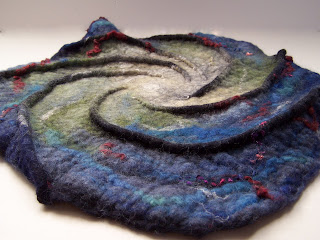Len Jacobs will display his life’s collection
of nature and travel photographs at his home studio during the 20th
Chatham Studio Tour the first two weekends in December, but these visions are
serendipitous.
 |
| Chatham County photographer Len Jacobs |
Fortunately, there was a Sight Conservation
Class available in the New York City Public Schools. “It was K through 6th grade, and the teacher
understood kids with visual problems as well as their needs” Jacobs says. “We
had special pencils, large print books, matte paper while physical activity was prohibited.” It was
thought that Jacobs’ visual problems made him susceptible for a possible
retinal detachment.
Jacobs pursued this goal at NYU School of
Education, received a BS in Education in 1948, and an MA in Health Education
and Administration a year later. However, when he started looking for a job in
the New York City public school system, his old vision problems came to the
fore again. “You had to have 20/30 eye sight to get a license to teach Phys
Ed,” Jacobs laments, “therefore I failed the medical exam.”
The diagnosis was a type of astigmatism
creating an elongation of the eyeball,
which might make him a candidate for a retinal detachment. Jacobs filed a series of appeals with the
school system and the New York State Commissioner of Education. He had
examinations by prominent ophthalmologists, who documented that the previous
diagnosis was in error. He waited for the authorities to respond. In the mean
time he and his wife Doris relocated to Elmira, NY and Washington, DC, where he
found various jobs. Finally, in 1951 Len Jacobs received licenses to teach high
school biology, high school physical education and elementary school in New
York City. Finding an actual job was still a challenge, but he landed a
position as an Attendance Officer where enjoyed a 35 year career while he
became a Certified Social Worker. After a competitive exam, he became licensed
and was appointed as a District Supervisor of Attendance in the New York City
School system Bureau of Attendance. Of course he had many educational and
societal interesting experiences. “One day, I had to visit John Gotti’s home to
find out why his kid was absent from school,” he quips.
.jpg) |
| Jasper National Park; Alberta, Canada Photo by len Jacobs |
Jacobs' family life, with four children, was
the foundation for his avocation as a photographer. In the summer, we had more
time than money,” he laughs. “We started taking little camping trips for family
fun.” He, of course, took vacation photos. “I wasn’t a very good photographer,”
he admits, “so I began to take courses and to study books on photography while
riding the Long Island Railroad each day to work.” He joined local camera clubs
to hone his skills. He began to share his photos, taken from larger and larger
trips to state and national parks all across the country and in Canada, with
audiences throughout the greater New York City area. He has won numerous awards
and recognition. The one he is most proud of ,however, was his "Ice
Pattern" at the New York Metropolitan Museum of Art, Photography as an Art Form.
Now in retirement here in North Carolina, Len
Jacobs continues to share his life’s catalog of photographic experiences. He
has served as President of the Nassau County Camera Club on Long Island as well
as President of Chapel Hill Camera Club. In the past he was Director of the
Southeastern Council of Camera Clubs Convention. He has presented multiple
projector slide shows with music and poetry and special audio-visual
techniques. He still judges photo competitions and lectures on "photo
composition." He recently began to transfer the images captured in his
myriad of slides to digital files, and printing them for people to enjoy in
their own homes. “I really enjoy it when people share my precious visions,”
Jacobs emotes.
On the inside jacket flap of his book
"Birds I've Seen" the following is written, "There is something
inherently special about Len's photography. These photos illustrate that
photography performed with such care and precision, with such love and respect,
with such skill in the use of camera tools, can be an art form for all to share
and enjoy."
The irony of it all is, that a man who was
told to avoid physical activity, and that at the age of three might soon be
blind, has used his camera to record and share with others some of the visual
music of our beautiful world.
Len Jacobs is one of the many
regionally and nationally recognized artists and fine crafts people who will
open their studios the first two weekends in December at the 20th
Annual Chatham Studio Tour (
http://www.chathamartistsguild.org/about/details.html ). Visitors from all
around enjoy Chatham’s rural beauty and share with the members of the Chatham
Artists Guild in the creative process. It is a holiday tradition, and an
opportunity to purchase unique original
art.











